Dandelions and wild violets are some of the first blooms of spring. Wouldn’t it be lovely to preserve that beautiful freshness to remind you of the wonders of spring even in the middle of the bleakest winter?
How about other beautiful flowers such as peonies, lilacs, lavender, and bee balm?
You may already be cultivating these beautiful flowers for their lovely fragrance and beautiful blossoms, but did you know you can also turn them into pretty and delicious jellies?
Flower jellies are one of the best ways to preserve the glories of springtime. Even if you are new to canning and preserving, you can create these delicious jellies and preserve them for your family to enjoy all year.
Here are twenty delicious flower jelly recipes and variations for you to try for yourself to preserve the delicate blossoms and their beautiful fragrance.
Table of Contents
First Thing’s First: Flower Tea
Most flower jellies are made by first creating flower tea. Typically, you would boil water, and pour it over fresh petals of whatever flower you are turning into jelly. Allow the petals to steep until you achieve the desired strength of flower tea.
After your tea is made, you can then cook the tea with pectin, lemon juice, and sugar, until you get the right consistency.
Then you need to can or preserve your jelly. Some recipes vary and some flower preparation can vary, so be sure to read your recipes carefully.
It is imperative that you start with flowers that are safe to consume. Never use a flower that you cannot correctly identify as one that is safe to consume.
There are plenty of delicious and safe flowers to eat, so be sure you only use the right ones. Don’t be afraid to ask your local ag extension for help!
When making flower jelly, it is also important to use clean and safe flowers. Flowers growing along roadways may be covered in dirt, grime, and chemicals from cars and road treatments.
Flowers from florists or other commercial producers may have been treated with pesticides and fertilizers to enhance their beauty but making them unsafe to consume.
Sometimes, you can purchase edible flowers in your local grocery section, but for best results, you may want to grow your own flowers without the use of pesticides or commercial fertilizers.
You also need to make sure your flowers are clean and free of bugs. It helps to rinse and soak your flowers for a little while to make sure all the bugs and debris have been removed.
Read the recipes carefully to determine if you should only use the petals, buds, or other parts of the flower. Sometimes, the green at the bottom of the petals can cause bitterness, which you want to avoid in a sweet jelly.
If you are water bath or pressure canning your jellies, make sure you follow the recipes precisely, because you need to have the correct pH in order to be certain your jelly is safe to eat.
Not following the recipe could cause harmful pathogens to grow in your jelly. You can find out more about canning rules here. If you are not canning your jellies, they should last for a short time in the refrigerator.
1) Dandelion Jelly
I didn’t think it was possible until I tried it myself. This delicious jelly has a flavor like robust honey. I purchased a jar of this golden-hued delight at a local Mennonite grocery store and it was amazing.
I tried to hide it from my children so I could keep it all to myself, but they discovered it – and devoured it, going so far as to wipe every last drop from the jar with their tiny little fingers. You can purchase dandelion jelly at local farmers’ markets and small family-run stores, but it can be pricey.
For the cost of dandelions (free in your own yard!), you might want to cook up this delicious jelly all by yourself.
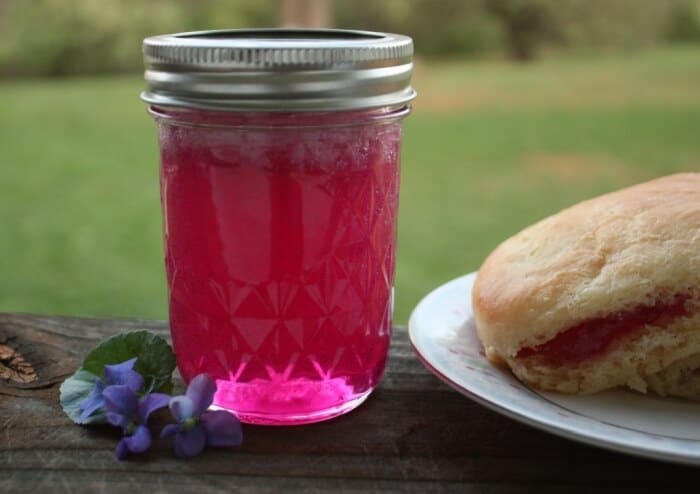
2) Wild Violet Jelly
If you prefer a jelly with a slightly tart taste, you will love wild violet jelly. Wild violets are fairly common in the United States, especially in the Pennsylvania springtime, but their growing season is very short.
You’ll find them popping up all over in early spring, their beautiful blooms providing pollen for the earliest honeybees and pollinators. But they aren’t just beautiful, these blooms are tasty, too.
You’ll want to pluck up as many of these darling delectables for your next batch of wildflower jelly as you can find. Although the flowers are a rich purple, the final jelly is a shining burgundy color.
As The Nerdy Farm Wife and I both found, it is easy for this jelly to come out more like syrup than a jelly, so follow directions carefully, here. Even if your jelly comes out like syrup, you can still use it on pancakes, and waffles, and to make delicious refreshing drinks.
3) Lavender Jelly
Lavender has long been touted for its soothing, calming, and stress-relieving properties and heavenly scent.
This lovely flower is often used in sachets and pillows, infusions, and teas. Culinary lavender bears a slightly sweet and floral flavor and flowers, leaves, buds, and stems can be used in culinary dishes.
If you love lavender, you can make it into a delicious jelly. You can grow your own lavender flowers if or purchase dried edible flowers online. Go here for the full recipe. For a grownup jelly try this version of lavender chardonnay jelly.
4) Nasturtium Jelly
Nasturtiums are beautiful, brightly colored edible flowers that are terrific in salads, as garnishes, and stuffed with cream cheese. The buds and seeds can be pickled, if you desire, and young leaves are also edible.
Nasturtium leaves contain iron, and vitamin C. If you have two cups of these beautiful buds, you can make delicious jelly with them, too.
To start your nasturtium flower jelly, you’ll want to use brightly colored, fresh flowers to make your flower tea. The longer the tea steeps, the stronger the flavor. You may even want to add a few drops of hot sauce to your recipe for a spicy jelly. For further directions, go here.
5) Bee Balm
Bee Balm, also known as Wild Bergamot, is a beautiful member of the mint family that attracts pollinators to your garden.
Every part of the plant that grows above ground is edible, according to allnature.com. Some say that the taste of bee balm is similar to that of oregano.
Bee balm is also a delicious additive to salads and teas and can be used in making salves. Early Americans used it to treat nausea. This beautiful flower also makes a great flower jelly. Check out this recipe to see if bee balm jelly is something you would love to make.
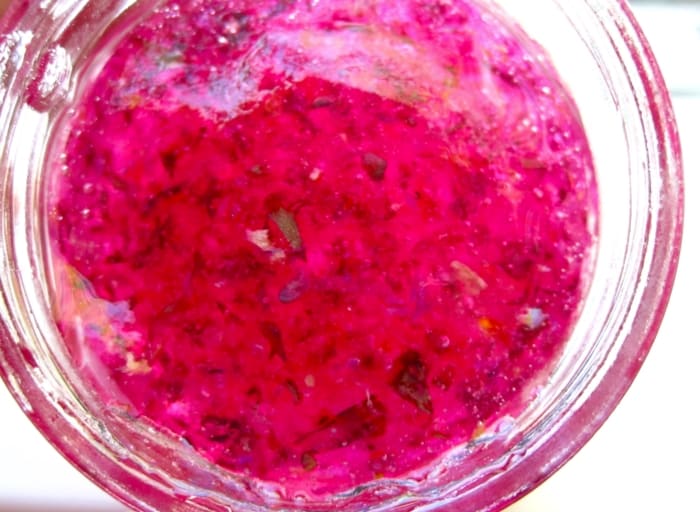
6) Johnny Jump Up Jam
If you love those tiny, edible blooms known as johnny jump ups, you might love making it into jam. These flowers boast high amounts of Vitamin A and C and sport a sweet flavor that resembles cinnamon
Johnny jump ups don’t have a long growing season, so snatch them up while you can. Try this beautifully-hued jam for your pantry and to preserve those gorgeous flowers all year long.
7) Clover Jelly
If you like the sweetness of honey, you’ll love this clover jelly. You are likely to find plenty of white clovers gracing your backyard, so put them to good use for this tasty jelly.
White Clover has some medicinal qualities, and it is said that a tea made of white clover can be used to fight off colds and fevers.
The dried blossoms are slightly sweet and have a hint of vanilla flavor, which sounds delicious for a jelly. Try it here. If you don’t have any white clover flowers in your yard, you can make the same jelly with red clover.
8) Hibiscus Jelly
For a sweet and tangy twist on jelly, try this version of hibiscus jelly. Its vibrant hue and delicious flavor make it a great addition to all kinds of dishes, from pancakes to toast to ice tea. Make sure you use the edible version of hibiscus, known as Hibiscus sabdariffa.
If you use the calyxes rather than the blooms to make your hibiscus flower tea, you will end up with a brighter, more intense pink color. Hibiscus is known to be high in Vitamin C and has a tangy lemon-cranberry flavor.
If you like a little spice in your kitchen, you may want to try this spicy version of hibiscus jelly, which goes great with ribs.
9) Daylilly Jelly
While Easter lilies are not edible, daylilies certainly are, with one caveat. You have to find the right kind. You’ll find a great recipe for daylily jelly here, alongside a deep discussion on how to know if you have edible daylilies or their not-so-edible counterparts.
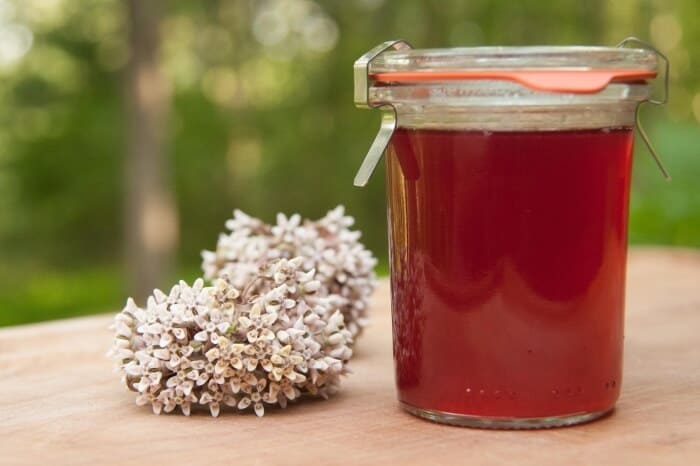
10) Milkweed Flower Jelly
If you are into foraging, you may want to try your hand at milkweed flower jelly. There is some debate over whether or not milkweed is edible or toxic, however, experts seem to agree that properly prepared milkweed is edible and safe.
If you like what you read, there is a recipe for milkweed flower jelly, here. Be sure to do your own research and check with your local ag extension to make sure this plant is safe for you and your family.
You’ll have to do the research for yourself to be sure this is something you want to attempt on your own and there is an excellent discussion on the safety of milkweed here, to get you started.
11) Pink Peony Jelly
Peonies are gorgeous flowers to have gracing your walkways and garden, but they are edible and delicious to the tastebuds as well as the eyes. Don’t be sad when the petals start to fade, turn them into jelly instead.
This pretty pale pink jelly has the flavor of strawberries and peaches. Find a wonderful recipe for pink peony jelly here.
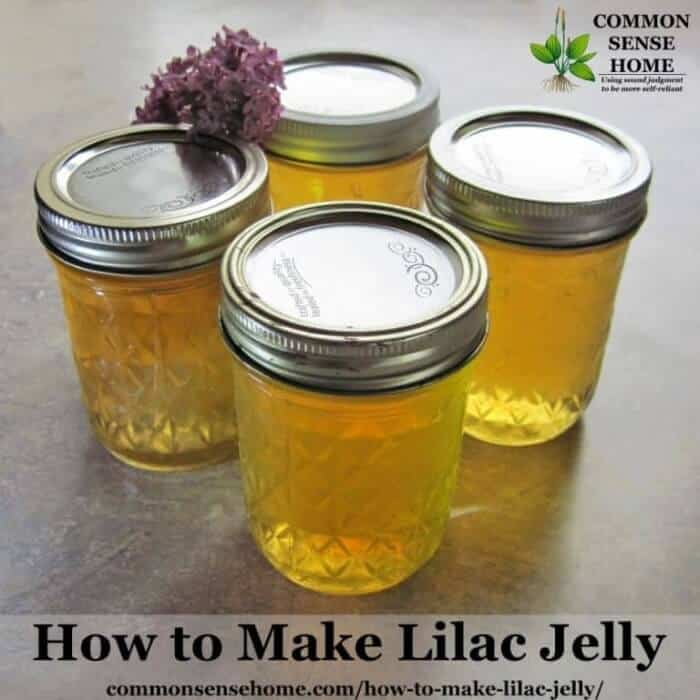
12) Lilac Jelly
Lilacs are known for their sweet and strong floral scent. Surprisingly, these prolific and dainty flowers are also edible. You can dip them in sugar to top deserts or salads, or make a refreshing flower infusion.
If you are looking for something floral and delicious to serve over warm bread or breakfast biscuits, consider this refreshing lilac jelly.
13) Lemon Balm Jelly
Lemon balm is a refreshing perennial. This member of the mint family releases a tangy lemony scent any time you brush up against it. Crushing lemon balm leaves can repel mosquitos without harsh chemicals.
Even better, lemon balm tea infusions have been thought to quell anxiety and stress. You can sprinkle the zippy leaves of this herb onto salads, or you can turn it into an amazing jelly. Try this recipe for lemon balm jelly, which includes the juice of a fresh lemon.
14) Elderflower Jelly
Elderflowers are the small and dainty white flowers that grace the elderberry bush. Some say that the elderflower and elderberries could be toxic when eaten raw or in large quantities, causing nausea, vomiting, and diarrhea.
However, cooking elderflowers and berries removes the toxin, so you’ll be able to enjoy this delicious jelly worry-free. See the recipe for elderflower jelly here.
15) Rose Petal Jelly
Rose petals have long been used in skin care for their soothing properties, containing plenty of Vitamins A, C, and E. Rose petal tea may soothe the digestive system, menstrual cramps, and anxiety.
Avoid using petals from florists that may contain pesticides or fertilizers and try to use organic rose petals, if possible, when you make this delightful rose petal jelly from Martha Stewart.
16) Marigold Jelly
Marigolds aren’t just for keeping pests out of your garden, they are edible, too. You can eat the leaves and petals fresh in salads, and blanched in culinary dishes, or you can make the delightful petals into a delicious jelly.
When you make your own marigold jelly, Mom’s Frugal recommends snipping off the green part of the flower, so you are left with only petals. The green bottoms can be bitter.
You’ll want to steep your three cups of petals in boiling water and leave them to cool for three hours or more before beginning to make the jelly. See the rest of the recipe from Mom’s Frugal, here.
17) Chrysanthemum Jelly
Chrysanthemums, often shortened to mums, all have edible flower petals that are generally used in tea. The species known as Chrysanthemum coronarium also has tangy, edible greens which turn bitter if overcooked.
Chrysanthemums are high in antioxidants and were once used in China to treat headaches. Chrysanthemums vary in flavor from sweet to peppery. This recipe for chrysanthemum ginseng wolfberry jelly has the consistency of jello and stands alone as a delicious and refreshing dessert.
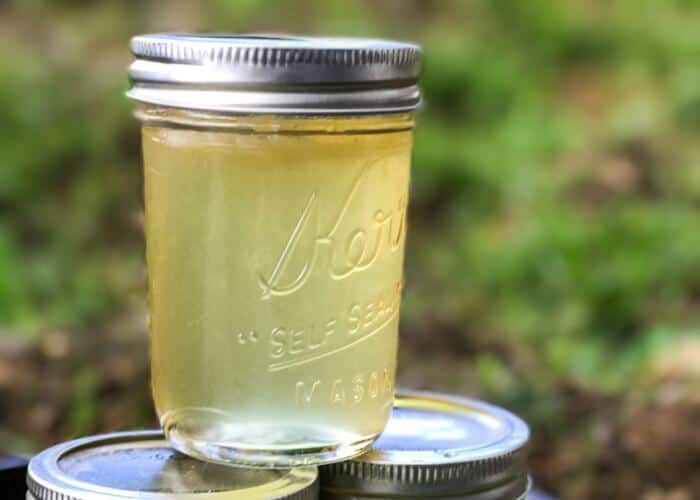
18) Honeysuckle Jelly
I have many fond memories of sucking the sweet nectar from honeysuckle flowers from childhood summers gone by. And nothing beats the fragrance of honeysuckle blooms wafting by as the evening sun begins to set.
However, honeysuckle berries are toxic to humans. Do not use the berries to make jelly. While toxicity varies between species, the honeysuckle berry can cause vomiting, diarrhea, and rapid heartbeat.
Avoid using the berries and stick to picking just the flowers. Do not allow small children or anyone else to ingest the berries. You’ll need plenty of honeysuckle flowers for this sweet honeysuckle jelly recipe from Daily Dish Recipes.
19) Fireweed Jelly
Fireweed is a unique plant that is one of the first to spring up after a forest fire and begin to repair the soil. This member of the Evening Primrose family bears pretty purple-hued to rose colored flowers. Check out this quick video on how to identify fireweed in your area.
This recipe from food.com calls for fireweed juice but also tells you just how to make it. Check out the recipe for this pretty colored jelly here. While you are making your fireweed tea or juice, the color of the tea will turn a dull brownish hue.
However, when you add lemon juice to make the jelly, the vibrant rose color will return, making for a beautiful presentation.
20) Forsythia Jelly
One of the first signs of spring are those brightly colored, yellow shrubs cropping up all over Pennsylvania. We just love seeing those bright bushes after a long gray winter.
They are easy to grow and easy to care for, and you may see them growing wild or trimmed into neatly shape bushes and privacy hedges.
As it turns out, those pretty yellow flowers are also edible. They can be rather bitter but do make a delightful garnish on salads and other culinary dishes.
Now you can turn those pretty blossoms into jelly. This pretty yellow jelly has a sweet floral taste and you can find the recipe right here.
Make Own Flower and Herb Jellies
These delicious recipes give you plenty of ways to preserve the beautiful blossoms in your yard and garden. But if you still aren’t satisfied after all of these amazing flower jelly recipes, you may want to try your hand at creating your own.
Try a mix of herbs, edible flowers, and even some hot pepper, if you like.
Mix and match some of your favorite edible flowers for a jelly that is completely your own and unique by following the basic recipe here, and making adjustments as needed. You can check out this list of edible flowers to inspire your jelly concoctions.
You’ll want to make sure you are only using flowers that are edible and not toxic. Also, be sure that you can correctly identify the right flower so you don’t inadvertently make yourself or your family sick.
Follow safe canning rules and recipes carefully for the best results and enjoy your delicious hard work all year round.
What are your favorite edible flowers to turn into jelly? Share your recipes and links below, and don’t forget to pin this for later on your favorite Pinterest boards.
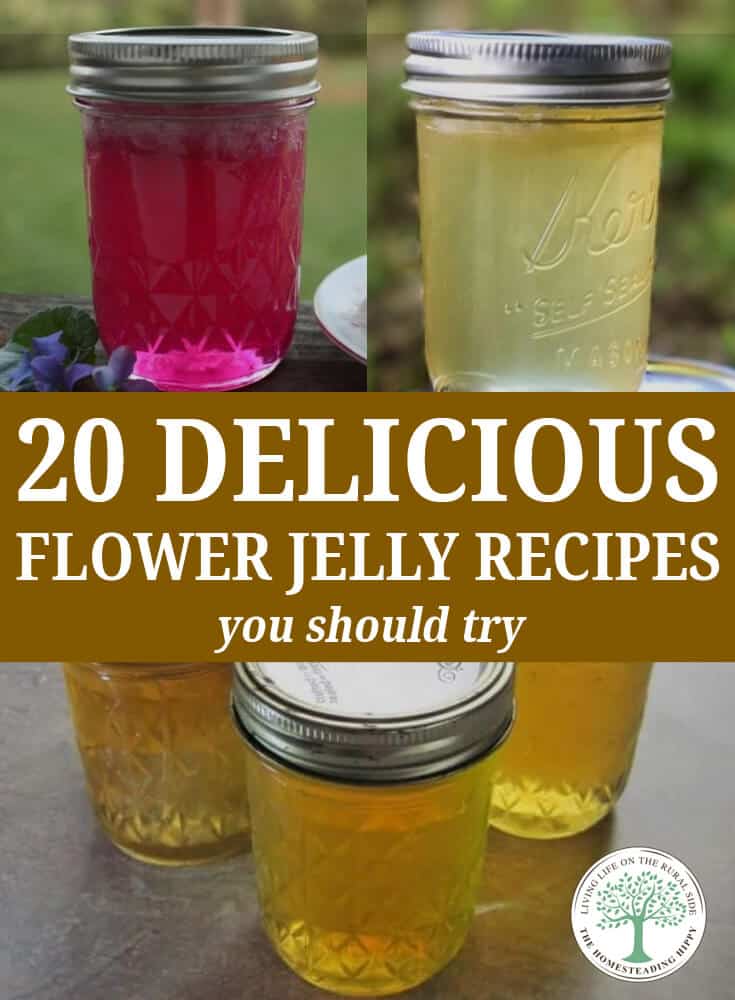

Amanda is a homesteader and a Jesus-loving, mother of 6 toddlers. She’s raising lots of fancy chickens and goats on her small homestead (among other things). Find out more about the team here.

Thank you for the jelly ideas and recipes. I made rose petal jelly and it was great. I can’t wait to try yours.
Do you have to do a water bath? Some say water bath and some don’t. Will it matter?
Do you want it to stay fresh and not mould?
Honeysuckle jelly.
Tried making it for first time this year and everyone we have let share in this seasonal stock, have raved and can’t wait until next season. Neither can I.
A Jar of Sunshine
In Florida we have beauty berry bushes. I’ve herd you can make jelly out of the berries and mosquito repellent from leaves. Do you own anything about this?
I always go with water bath & most times, a step more of insurance with 10 minutes of low pressure on my pressure canner; keeps forever & is assuredly more sterile.
After cooking place in sterile jars and sterile lids turn upside down 5 minutes then turn back up do not have to water bath German has always done it this way even the ones in the grocery store they don’t water bath or pressure can it
Can you freeze your flower water infusion to make the jelly later when it’s more convenient?
I am wondering the same thing.
Yes! You certainly can and I often do! You can also freeze the blooms for later use as well.
Can you use azaleas to make jelly?
Can you leave some of the flower in the jelly? It would be so pretty with fragments of the colorful flowers (nasturtiums and johnny jump ups for example). Would it make a difference when canning to stabilize shelf life?
Please make a book with all the flower jellies. I love making flower jellies (dandelion, wild violet, lilac is what I’ve made so far) but have been searching everywhere for a real paper book.
I made the Dandelion jelly last year and am in the processing of doing it this year. It tasted like a light honey. It was delicious and everyone loved it and it was very unique! I canned it in 4 oz jars and gave it as token gifts at some dinner parties.